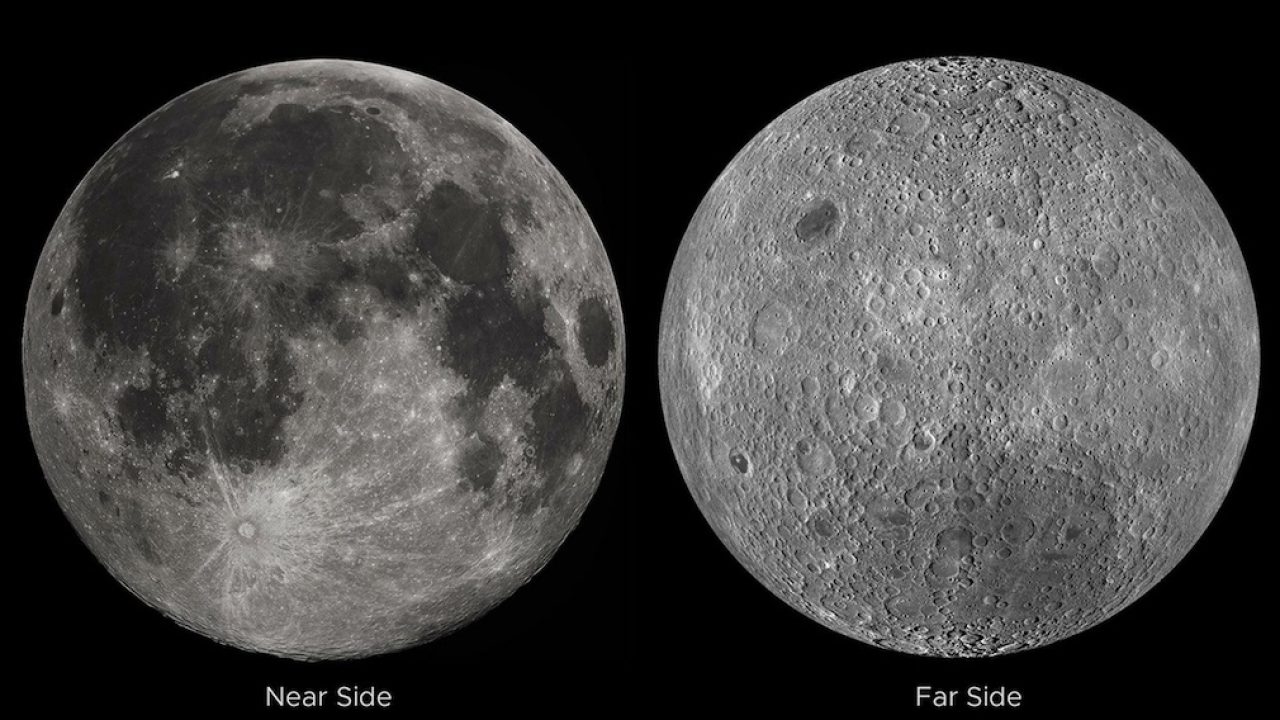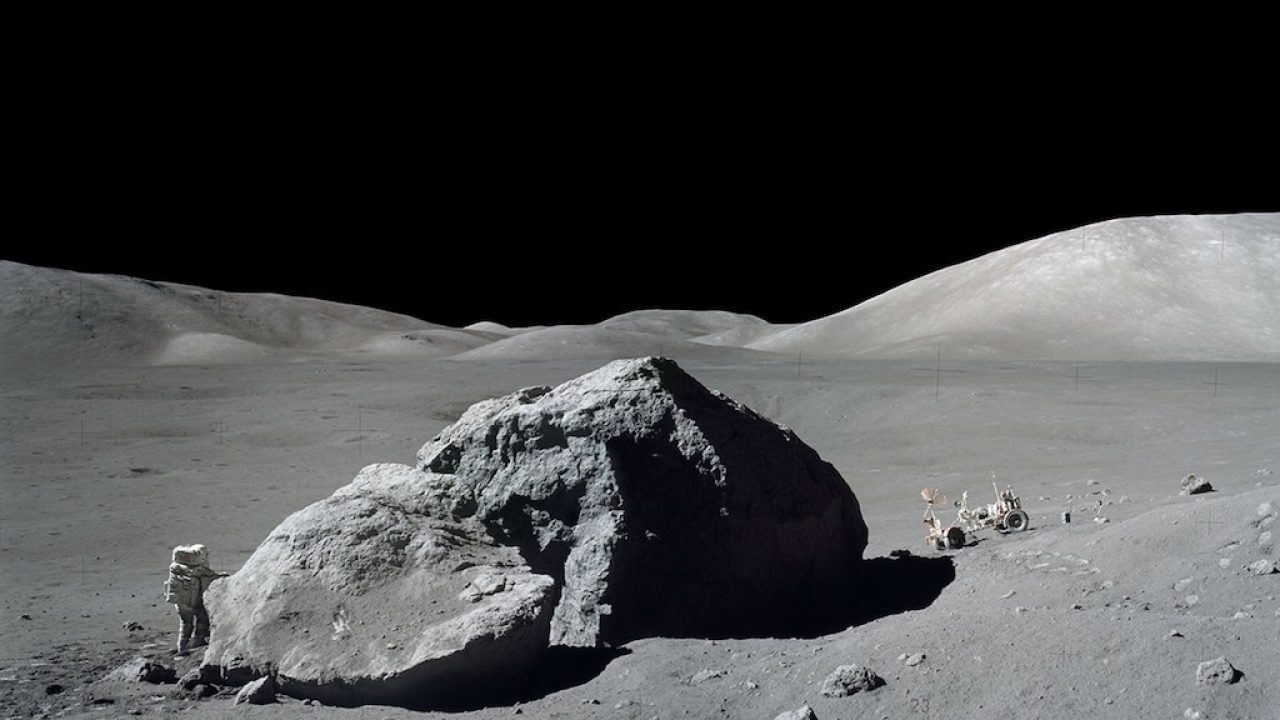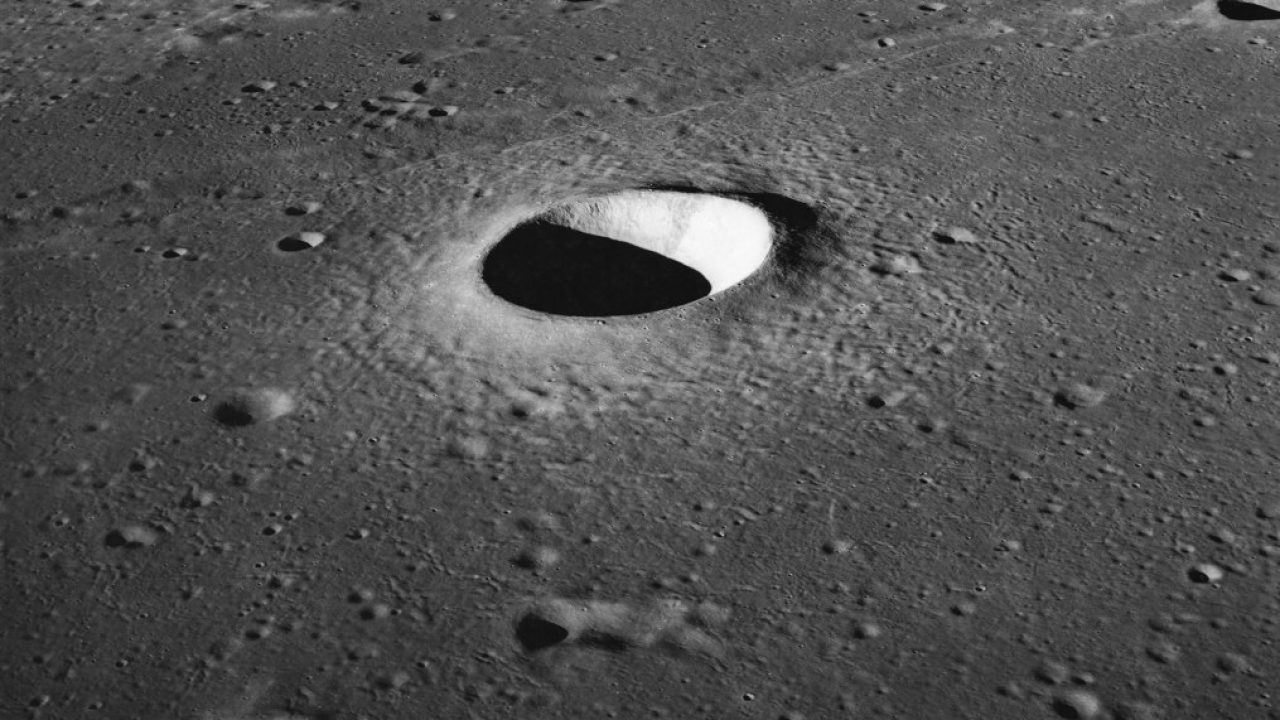

(The Moon’s near and far sides exhibit unusual discrepancies, such as the thickness of the crust, which is 43 miles on the near side compared to 93 miles on the far side. NASA LRO/ JATA Mehta)
The Earth’s Moon – the silent guardian and a beacon of divine precision, from shimmering moonlight to the gravity that tugs our oceans.
Musa Sattar, London, UK
Deputy Science Editor
Look up on a quiet night, and there it is – the Moon, a glowing sentinel in the sky, casting its gentle silver light over the sleeping world. It hangs there, unshaken, unhurried, an unblinking eye watching over the Earth, guiding nocturnal animals, and inspiring poets for millennia.
Beneath its serene glow lies a world of fascinating complexity. The Moon’s core is proportionally smaller than that of other rocky planets, with a solid, iron-rich inner core about 149 miles in radius, encased in a liquid iron shell roughly 56 miles thick. Surrounding this is a partially molten layer extending 93 miles outward. Above this lies the Moon’s mantle, composed of minerals like olivine and pyroxene – rich in magnesium, iron, silicon, and oxygen – stretching all the way to the base of the crust.
The Moon’s crust itself varies in thickness, measuring around 43 miles on the side facing Earth and nearly doubling to 93 miles on the far side. It is made up of a mix of oxygen, silicon, magnesium, iron, calcium, and aluminium, along with traces of titanium, uranium, thorium, potassium, and even hydrogen. Nearly the entire lunar surface is blanketed by charcoal-grey, powdery dust mixed with rocky debris known as the lunar regolith – a remnant of billions of years of meteorite impacts. Beneath this dusty shell lies the megaregolith, a layer of fractured bedrock shattered by ancient cosmic collisions.
The Moon’s surface is a mesmerising patchwork of light and dark, representing rocks of different compositions. The bright, rugged highlands stand in stark contrast to the darker, smoother maria (Latin for seas) vast plains formed when ancient asteroid impacts created basins that later filled with flowing lava. These volcanic plains, some dating back as far as 4.2 billion years, offer a window into the Moon’s fiery past, preserving the story of a world that once pulsed with molten activity.
Hanging in the sky like a luminous pearl, the Moon is far smaller than Earth, yet its presence is immense. With a radius of about 1,080 miles, it spans less than a third of Earth’s width. Suspended an average of 238,855 miles away, the distance between Earth and the Moon is so vast that 30 Earth-sized planets could fit in the space between them. And yet, despite this enormous gap, the full Moon on a clear night is breathtaking. Its glow is so striking that it never fails to elicit a whispered ‘Wow’ from those who pause to admire it.
Beyond its mesmerising glow and rhythmic phases, the Moon plays a far greater role – it is Earth’s silent guardian, keeping our planet’s delicate balance intact. One of its most crucial functions is stabilising Earth’s axial tilt of 23.5 degrees. Without this steadying force, our planet would wobble unpredictably, experiencing extreme seasons. Some regions would barely see the sun, while others would endure months of scorching daylight. As astrophysicist Paul M. Sutter puts it, without the Moon, ‘Everything we know about the seasons would be completely out of whack.’ The climate would spiral into disorder, reshaping life as we know it.

(Astronaut Harrison H. Schmitt stands beside a large lunar boulder during Apollo 17 at Taurus-Littrow on Dec. 13, 1972. Rock samples from this Apollo mission were taken. NASA/Eugene Cernan)
Yet, the Moon does more than steady our world – it keeps time in the cosmos. Bound to Earth by an invisible tether of gravity, it is a celestial timekeeper, marking the passage of months with its ever-changing phases. As it orbits, it reveals different faces – the crescent, the gibbous, the full, and the new – an elegant and unbroken rhythm in the sky. This cycle, so precise and unwavering, has guided civilisations for millennia, shaping calendars, agriculture, and even the motion of the sea.
But how does the Moon pull at the waters of Earth? It is a silent force, a steady hand that tugs at the oceans as it orbits. Gravity stretches the seas toward the Moon, creating a bulge – what we call high tide. And as Earth rotates, this bulge moves, causing the rhythmic ebb and flow we see on every coast. The Sun plays a role too, joining forces with the Moon during full and new moons to create even stronger tides, called ‘spring tides.’ And when the Sun and Moon pull at right angles, their forces weaken each other, resulting in gentler ‘neap tides.’ It is a flawless system, working in perfect balance, shaping coastlines, nourishing marine life, and influencing weather patterns.
Even beyond this, consider the seamless mechanics of their orbits. The Moon completes its cycle around Earth in just 29 or 30 days, while Earth takes approximately 365 days to circle the Sun. Yet, despite their vast differences, neither can deviate from its path. The Earth cannot shrink its immense orbit to match that of the Moon, nor can the Moon expand its journey to match the Sun’s. And certainly, these celestial bodies do not control their own movements. So, who governs them? Who has set them on these precise courses, never allowing them to collide or drift aimlessly? It is none other than the One Who commands the heavens – the Creator, the Master of all things, Who has ordained their perfect motion with absolute wisdom.
And then, there are the eclipses – those rare and dramatic moments when the Earth, Moon, and Sun align perfectly. A lunar eclipse occurs when the Earth moves between the Sun and the Moon, casting a shadow that turns the lunar surface a deep, eerie red. A solar eclipse, even more breathtaking, happens when the Moon covers the Sun entirely, plunging day into an unnatural twilight. How remarkable that our Moon, so much smaller than the Sun, is positioned at just the right distance to appear the same size from our perspective, creating a perfect eclipse. This is no accident. Such precision speaks of a design too exact to be random.
Interestingly, the soft radiance that bathes the night in silver is not its own but borrowed. The Moon has no light of its own; like a mirror, it merely reflects the sun’s rays, scattering them across the dark canvas of night. But how perfectly it does so! It is as if nature placed it there just so that even in the absence of the sun, we might not be left in total darkness.

(A lunar crater is created when an asteroid, meteoroid, or comet – usually travelling at speeds exceeding the speed of sound – collides with the Moon’s surface Image from NASA)
Moonlight and the lunar phases also influence foraging, communication and other aspects of nocturnal life. Several studies have revealed how lion prey behaviours, dung beetle navigation, fish growth, mass migrations and even birdsongs are impacted by lunar light.
Despite its luminous beauty, moonlight is astonishingly faint, up to 400,000 times dimmer than sunlight, depending on its angle relative to the Sun and Earth. And yet, this delicate glow is enough to illuminate dense forests, shimmer across vast oceans, and guide both travellers and nocturnal creatures through the night.
Hazrat Mirza Ghulam Ahmad (as), the Promised Messiah and Imam Mahdi, profoundly observed that the physical forces of nature are not independent powers but merely instruments of a greater, unseen force; the mighty power of God. It is His divine will that manifests through these forces, just as His power is displayed in the Moon, lighting up the darkest nights. He eloquently described this divine parallel,
‘The Moon brightens the terrible darkness of the nights. When it shines, it drives away the darkness before it. Its rising presents a wonderful scene. With the appearance of its rim, darkness begins to vanish away. Similarly, when God shines upon those who, being involved in darkness and impurities, incline to Him, they are purified and brightened as the dark night is brightened by the shining of the Moon. Moreover, as the Moon rises sometimes in the first part of the night, at others at midnight or in the last part of it, so with men. To some, Almighty God reveals His shining face in early age, to others in middle age, and there are not a few who see it only in old age. But like the totally dark nights, there are men who come and pass away without a single ray of light beaming upon them. The visible Moon is thus a symbol of the real Moon. The former has various other functions, which are only images of the functions of the latter. As the visible Moon has its effect in the physical world, so in the spiritual world, the true worshippers of God, Who is the real Moon, are assisted by the grace of God.’ [1]
The Moon does not choose to shine, nor can it alter its course. It moves as it is set to move, fulfilling its purpose without deviation. The words of the Promised Messiah (as) thus serve as a reminder that the visible Moon, with all its quiet splendour, is but a reflection of a greater, guiding presence, a reminder of the One Whose grace illuminates not just the sky, but the hearts of those who seek Him.
For centuries, the Moon has been the subject of human curiosity, inspiring myths, guiding explorers, and fuelling scientific inquiry. It has been studied, mapped, and even walked upon, yet it remains as mysterious as ever. Even in 2025, new research published in The Planetary Science Journal reveals that the Moon is still geologically dynamic, revealing more activity beneath its surface than previously believed.
Some call it a coincidence, a mere product of cosmic happenstance. But how can we look at the Moon and not see intention, design, and purpose? The precise tilt of its orbit, the way it influences the tides, its precise size and distance that allow perfect solar eclipses, the way its phases mark time so perfectly – none of it is chaotic, none of it random. It is a sign, a proof, a reminder that the universe is not a product of disorder but of supreme intelligence and will.
Consider this: every celestial body, from the smallest speck of cosmic dust to the largest star, obeys laws so intricate, so precise, that even the greatest minds struggle to fully grasp them. And yet, they exist, governing everything with unbreakable consistency. Who placed them there? Who set them in motion? Who ensures they do not collide or falter? It is not chance, for chance does not create order. It is not an accident, for accidents do not produce perfection. There is a force, a mind, a will behind it all – an Architect Whose wisdom and power surpass human understanding.
The Moon, in all its silent glory, is a testament to that truth. It is more than just a rock in space. Every time we look up and see it shining in the night sky, we are reminded of the harmony that governs the cosmos, the invisible hand that holds all things in place.
As the Moon rises once more, casting its quiet glow upon Earth, let us not take it for granted. Its beauty, purpose, and place in the cosmos remind us of the precision governing the universe. For in its luminous presence, we see not just the reflection of the Sun, but the reflection of a far greater light – the undeniable proof of a Creator Who shaped the universe with wisdom beyond measure.
ENDNOTES
1. The Review of Religions, March-April 1903, p. 123.
Further Reading:
Bill Leatherbarrow, The Moon (Reaktion Books, 2018).
Rebecca Boyle, Our Moon: A Human History (Sceptre, 2025).
https://science.nasa.gov/moon/eclipses
https://www.lpi.usra.edu/publications/books/lunar_sourcebook/pdf/Chapter08.pdf
https://www.scientificamerican.com/article/how-do-tides-shape-earth-and-the-solar-system
https://www.skyatnightmagazine.com/space-science/why-does-the-moons-appearance-change
https://www.scientificamerican.com/article/exploration-of-the-moon
https://www.science.org/doi/10.1126/science.300.5620.727
https://www.pnas.org/doi/10.1073/pnas.2413802121
https://www.newscientist.com/article/2279914-science-with-sam-what-would-happen-if-there-was-no-moon
https://www.space.com/the-universe/moon/the-moon-may-be-100-million-years-older-than-we-thought
https://iopscience.iop.org/article/10.3847/PSJ/ad9eaa
https://solarsystem.nasa.gov/news/1191/the-moon-illusion-why-does-the-moon-look-so-big-sometimes.amp

![[Dhul Hijjah Series] Calling Upon the Divine: The Art of Du’a (Part 3) [Dhul Hijjah Series] Calling Upon the Divine: The Art of Du’a (Part 3)](https://i2.wp.com/c7c8edde.rocketcdn.me/wp-content/uploads/Yahya-Ibrahim-Calling-Upon-the-Divine-1-1000x600.png?w=1000&resize=1000,600&ssl=1)




